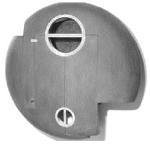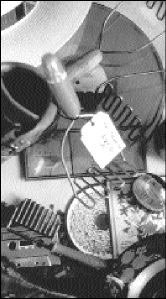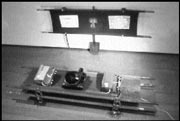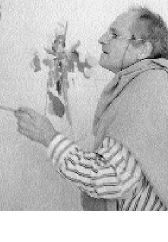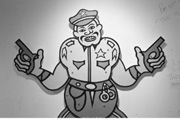BELLEVUE ART MUSEUM curator Brian Wallace pronounced himself sole juror of the Northwest Annual this year and proceeded to single-handedly select the art for the exhibition. Not that there’s anything terribly wrong with that, but it did cause a ripple of grumblings through the arts community and changed the Annual’s tone, infusing it with the highbrow conventions of a real, curated museum exhibition. This move away from the haphazard selections of a committee is deceiving; the show remains a mixed bag as far as art and talent go, but it’s a mixed bag in a slick package.
Pacific Northwest Annual
Bellevue Art Museum, ends September 3
Bypassing the hubbub of the mall for the last time—this is the final exhibition at the museum’s Bellevue Square location—one encounters art that’s thought provoking or pretty or both, in those rare and glorious instances where the two intersect. Wallace’s daring presentation, which throws symmetry to the wind, and his refusal to group works by artist evoke thoughtful dialogues among the divergent works.
This year’s Annual is augmented by five artist residencies. On the surface, the projects seem like they’re unified by a theme, but upon closer inspection they have very little in common. Robert Yoder used found materials from the new BAM construction site to make appealing sculptural works. Doug Keyes created a centerpiece for the show, compiling photographs and actual copies of participating artists’ favorite books. The effect, which hinges on an impressive plasticized wall of beautifully executed, ethereal portraits of open books, becomes a road map to the concepts and influences to be encountered in the galleries.
Brad Miller’s four-channel video installation is a painful but exquisitely lugubrious examination of the physical characteristics of video. Traveling at the exact speed of videotape as it rolls along inside the camera (approximately 1.3 inches per second), Miller documents a seven-hour journey from the museum to Lake Washington. This absurdly slow advancement through space is so utterly boring it becomes fascinating in its recording of the real-time occurrence of practically nothing.
OTHER GEMS of the exhibition include Michael O’Malley’s “Circuit” and Nicola Vruwink’s “With Love Forever.” O’Malley, playing with architectural space, has created a surprisingly exhilarating experience with a walk-through maze of wood and plastic. Informed by computer games and sci-fi, the irregular passageways are open at the top and make the participant feel, as they stroll through, as if their head is a detached entity, traveling on some kind of mechanized track. Projected onto a sticky-sweet, flower-adorned heart is Nicola Vruwink’s video of herself endlessly applying makeup and doing her hair. Intended as a reaction to commercialism and women’s self-image, the work actually functions as a shrine to self-aggrandizement.
Elizabeth Jameson’s charcoal drawings make a strong case for the most regimental of mediums. Compared to some of the well-meaning but perhaps overdone abstractions in oil and acrylic, her surreal and slightly disturbing portraits of women in states of bondage are affecting in their bold, calligraphic strokes.
John Jenkins II makes slightly blurred photographs of familiar tourist spots. His focus, unlike picture-perfect postcard photos of these scenes, is on the peripheral or the backside: a statue’s ass, the underpinnings of a bridge, the view of a monument from a raking angle.
This year’s show stands as a bright indicator of an emerging generation of local artists. Among the quips scrawled in the comment book, one visitor summed things up aptly: “Trying too hard to be avant-garde.” Of course, trying hard doesn’t automatically indicate failure, and failure at being “avant-garde” doesn’t necessarily indicate failure at making good art; some of the show’s conceptual failures are actually quite stunning in their execution as objects. In still-provincial Seattle, however, the cutting edge is a raw, tentative step toward a world that lies just out of reach.
